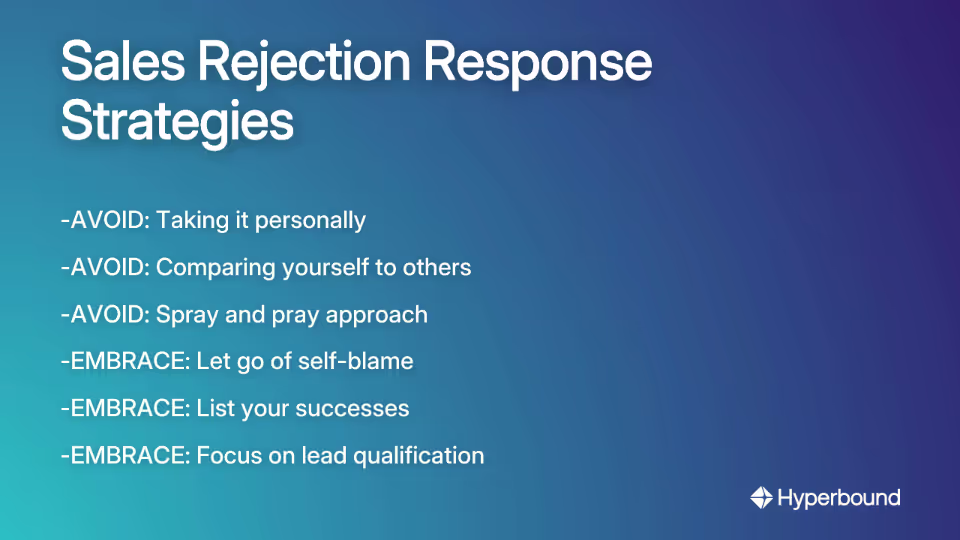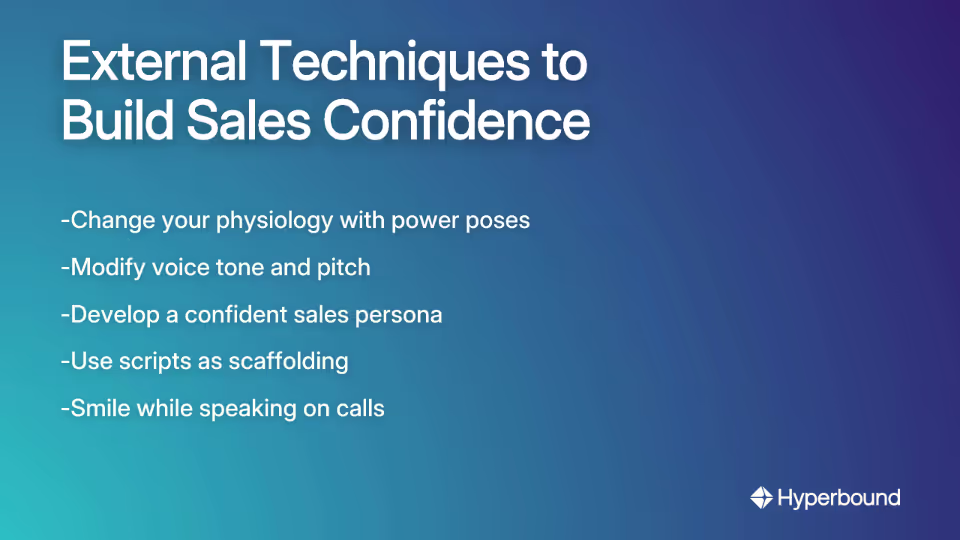
You've just hung up the phone after another prospect said "not interested," and that familiar sinking feeling hits your stomach. Your pipeline is drying up, and the thought of making another cold call makes you want to crawl under your desk. Rather than picking up the phone again, you find yourself tweaking one word in your email templates or endlessly A/B testing subject lines—anything to avoid facing another rejection.
Sound familiar? You're not alone.
As one sales rep confessed, "I used to be absolutely devastated whenever I was rejected. I used to think that something was wrong with me or I wasn't good enough." This deeply personal toll of hearing "no" day after day can crush even the most enthusiastic sales professional's spirit.
But what if rejection could become your greatest teacher instead of your worst enemy? What if each "no" could actually build your confidence rather than erode it?
Why Rejection Stings: The Science Behind the Pain
First, let's acknowledge a crucial fact: rejection hurts, and it's not "just in your head." Neuroscience research shows that our brains process social rejection in the same regions that register physical pain. Your brain literally treats that lost deal like an injury.
This pain can trigger what psychologists call cognitive distortion—where a single professional rejection spirals into questioning your entire worth. Before you know it, you're trapped in a self-destructive mindset, thinking, "I'm terrible at sales" or "I'll never close a deal."
For some sales professionals, especially those with rejection sensitivity, these feelings can be even more intense. When a prospect hangs up mid-pitch or ghosts you after three promising meetings, the emotional impact can be overwhelming.
Many sales cultures encourage you to "brush it off" and move on immediately. But suppressing these emotions isn't the answer. As one sales professional noted, "Resisting your emotions is how they get stuck in our bodies and turn into life-long trauma." Instead, acknowledging your feelings is the first step toward building true resilience.
The Resilience Reframe: Turning Rejection into a Growth Engine
The key to handling rejection isn't eliminating the pain—it's changing your relationship with it. This starts with adopting a growth mindset that views each rejection not as a verdict on your worth but as valuable data for improvement.
Detach from the Outcome, Focus on the Process
You can't control whether a prospect says yes, but you can control:
- The quality of your research
- How well you identify pain points
- The clarity of your value proposition
- Your follow-up process
- How you refine your buyer persona understanding
By focusing on these controllable aspects of your sales cadence rather than obsessing over outcomes, you reduce the emotional weight of each rejection.
Healthy vs. Unhealthy Coping Mechanisms

When rejection hits, avoid these common traps:
AVOID:
- Taking it Personally: Remember that rejection is often situational (budget constraints, timing issues, internal politics) and rarely about you personally.
- Comparing Yourself to Others: Your colleague's success with warm leads doesn't invalidate your progress with outbound sales.
- Spray and Pray Approach: Desperately reaching out to unqualified prospects only increases rejection rates.
EMBRACE:
- Let Go of Self-Blame: Replace "I'm a terrible salesperson" with "That pitch didn't resonate with this prospect."
- List Your Successes: After a tough rejection, actively remind yourself of past wins to counteract feelings of inadequacy.
- Lead Qualification: Focus on identifying prospects who are most likely to benefit from your solution to reduce rejection rates.
The Confidence Playbook: Actionable Strategies for Building Resilience
Now let's transform theory into practice with specific techniques to build your rejection resilience:

Understand the Numbers Game
A fundamental truth many new sales reps miss: a cold to close deal in a single cycle is EXTREMELY rare. As one experienced rep shared, "If you're calling 200 net new prospects who've never heard of your product, the odds you'll get a closed deal is slim."
Understanding this reality helps you contextualize rejection within the sales funnel. Each "no" simply moves you one step closer to the statistical "yes" waiting in your pipeline. This mindset shift alone can dramatically reduce the sting of individual rejections.
Time Block for Focused Persistence
Many sales professionals make the mistake of "wasting a lot of time tweaking one word in my talk track or A/B testing emails" instead of simply making calls. Create dedicated time blocks for high-rejection activities like cold calling or cold outreach. For example, set 9-11 AM daily for prospecting, with a goal of 30 attempts.
This approach:
- Contains the emotional toll to a specific part of your day
- Creates momentum through focused persistence
- Prevents avoidance behaviors that masquerade as productivity
Analyze Your Wins (Not Just Your Losses)
After successfully closing the deal, don't just celebrate—analyze what worked. What part of your pitch adaptation resonated? Which objection handling technique broke through their resistance? Track patterns in your successful interactions to create a repeatable process for moving prospects through the sales funnel. AI platforms like Hyperbound can even analyze your call recordings to automatically identify winning behaviors, helping you codify what works and scale it across the team.
Practice With Purpose
Role-playing objection scenarios with colleagues builds muscle memory, but it's hard to scale. To get reps more at-bats, platforms like Hyperbound provide AI-powered roleplays that allow sales teams to practice handling rejection gracefully in a safe environment. Recording your real calls (with permission) and listening back is also key to identifying moments where your confidence wavers. This combined practice is uncomfortable but accelerates improvement dramatically.
Seek Actionable Feedback
After a prospect declines, send a brief, professional follow-up asking: "To help me improve, could you share what factors led to your decision?" This transforms rejection into valuable intelligence for closing the deal with future prospects.
Focus on Quality Leads
As one sales veteran wisely noted, "50 warm leads are better than 1000 cold leads." Shift from a spray and pray approach to building relationships with well-qualified prospects. This doesn't mean avoiding cold outreach entirely, but rather ensuring everyone you contact is a genuine fit for your solution.
Projecting Confidence (Even When You Don't Feel It)

While internal mindset shifts are crucial, sometimes you need to "fake it till you make it." These external techniques can create a positive confidence feedback loop:
Change Your Physiology to Change Your Psychology
Your body language dramatically affects both how others perceive you and how you feel about yourself:
- Power Posing: Before calls, stand tall with shoulders back and arms extended for two minutes. Research shows this increases testosterone and decreases cortisol, hormones associated with confidence and stress.
- Voice Modulation: Lower your pitch slightly, eliminate uptalk (ending sentences like questions), and incorporate strategic pauses. Use a tool like Hyperbound's AI Real Call Scoring to get objective feedback on your tone, pace, and filler words, helping you identify areas for improvement faster than manual review.
- Smile While Speaking: Even on phone calls, smiling changes your vocal tonality in ways prospects can hear.
Develop a Confident Alter Ego
Create a sales persona that embodies the confidence you aspire to have. Before calls, mentally "step into" this character. This technique separates your personal feelings from your professional performance, making rejection less threatening to your core identity.
Use a Sales Script as a Scaffold
A well-crafted script isn't a crutch; it's a foundation that frees your mental energy to focus on delivery and listening. Having go-to responses for common objections reduces anxiety and projects confidence during challenging moments in the sales process.
Special Ops: Handling High-Stakes Rejection
While all rejection stings, losing a deal in the final stages of your sales funnel can be particularly devastating. Here's a 4-step protocol for these situations:
- Stay Calm and Professional: Take a deep breath before responding. Thank them for their consideration and maintain composure.
- Understand the "Why": Ask open-ended questions to learn why the deal fell through. "To help me learn, could you share what the deciding factors were?"
- Address Concerns with a Video Message: If there's a specific objection or misunderstanding, a short, personal video message can be more effective than another email or call in salvaging the relationship.
- Embrace the "No" as Intelligence: Every lost deal provides valuable insights about your competitor's strengths, your product's weaknesses, or blind spots in your sales process. Document these learnings to improve your approach to similar prospects.
From Surviving to Thriving
After a year and a half in sales, one rep who once felt devastated by rejection shared, "It has no power over me anymore." This is the transformation available to every sales professional who embraces rejection as a teacher rather than an enemy.
The most successful salespeople understand that rejection isn't personal—it's part of the process of qualifying out prospects who aren't the right fit. As another experienced rep noted, "People didn't want to be sold to; they wanted to be helped." When you genuinely focus on helping rather than selling, rejection becomes less about you and more about finding the right matches for your solution.
Remember: Every master salesperson was once a novice who feared rejection. The difference isn't that they stopped experiencing rejection—it's that they learned to use it as fuel rather than letting it extinguish their flame.
By implementing the strategies in this guide, you can transform your relationship with rejection and build authentic confidence that resonates with prospects. Each "no" becomes a stepping stone toward your next "yes," and more importantly, toward becoming a more resilient, confident version of yourself—both in sales and in life.
The next time a prospect rejects your pitch, take a moment to acknowledge the sting, extract the lesson, and then pick up the phone again with renewed purpose. Your future self (and your pipeline) will thank you.
Frequently Asked Questions
Why does sales rejection hurt so much?
Sales rejection hurts because our brains are wired to process it in the same regions that register physical pain. This is a physiological response, not just an emotional one. When you face rejection, your brain can trigger cognitive distortions, leading a single "no" to feel like a judgment on your entire worth, which is why it's so important to develop resilience.
How can I stop taking rejection personally?
You can stop taking rejection personally by reframing it as a situational event, not a personal verdict. A prospect's "no" is often due to factors you can't control, like budget, timing, or internal politics. Focus on separating your professional performance from your personal identity. Replace self-blame with curiosity by asking, "What can I learn from this interaction?" instead of "What's wrong with me?"
What is the best way to build confidence after being rejected?
The best way to build confidence is by taking immediate, constructive action. Instead of dwelling on the rejection, analyze your process, list your recent successes to counteract negative feelings, and practice handling similar objections in a low-stakes environment. Using AI role-play tools or practicing with colleagues can build the muscle memory needed to face the next call with greater assurance.
What should I do immediately after a prospect says no?
Immediately after a rejection, your first step is to remain calm and professional. Thank the prospect for their time. Then, if appropriate, ask for feedback by saying something like, "To help me improve, could you share any specific factors that led to your decision?" This transforms the rejection from a failure into valuable market intelligence.
How does focusing on the sales process instead of the outcome help?
Focusing on the process rather than the outcome shifts your attention to actions you can control, which reduces the emotional sting of rejection. You can't force a "yes," but you can control the quality of your research, the clarity of your pitch, and the consistency of your follow-up. This approach builds professional discipline and makes each call a learning experience, regardless of the result.
Are sales scripts a good or bad thing for handling rejection?
Sales scripts are a good thing when used as a foundation, not a crutch. A well-crafted script provides reliable, pre-approved responses to common objections, which reduces anxiety and frees up your mental energy to listen actively to the prospect. It ensures you project confidence and stay on message, even when faced with unexpected resistance.
"The difference between a successful person and others is not a lack of strength, not a lack of knowledge, but rather a lack of will." – Vince Lombardi

Book a demo with Hyperbound
.png)













